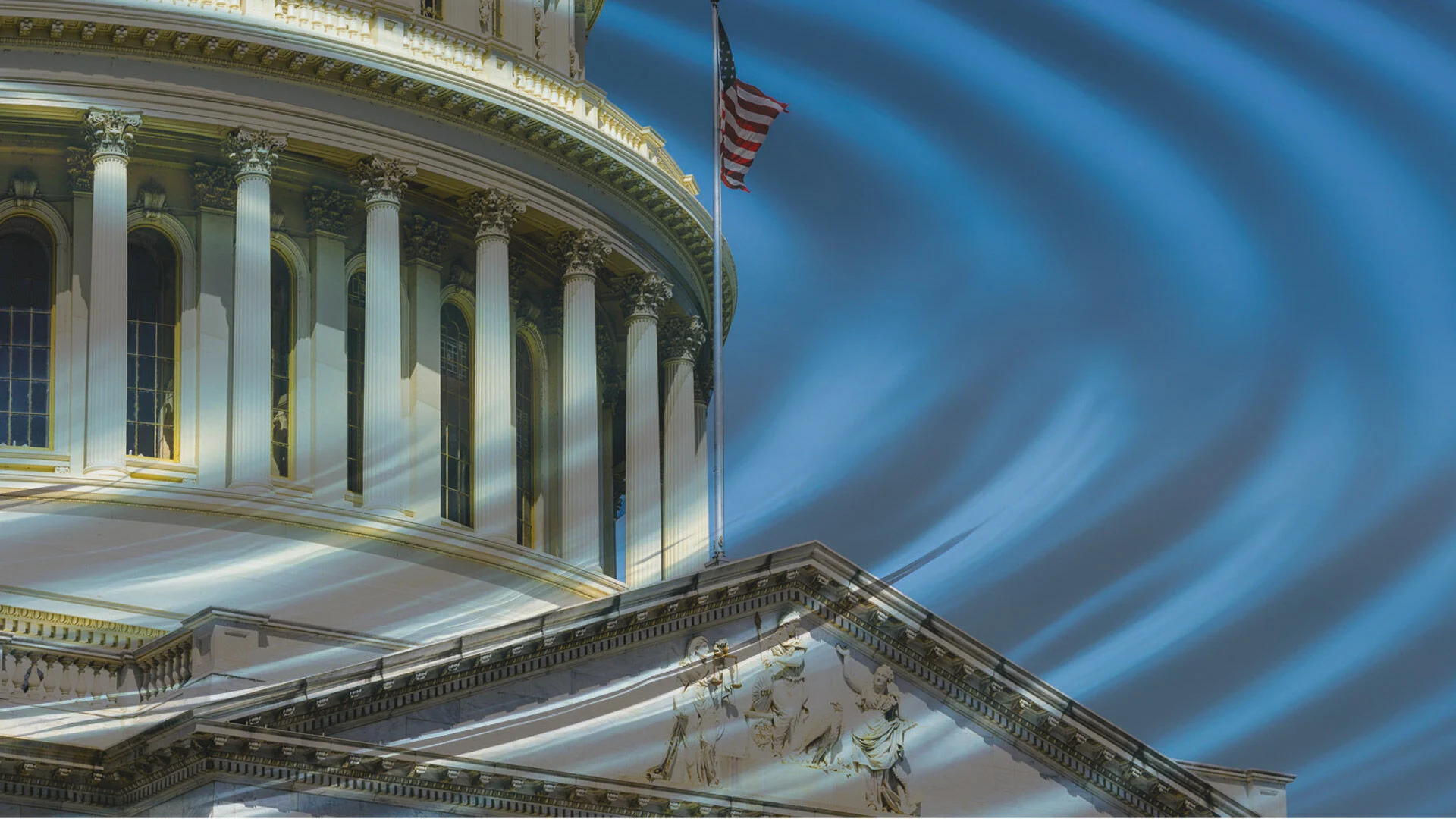Here’s what we know…and don’t yet know.
We read about “the cuts,” then waited for what they’d mean.
With the signing into law of the One Big Beautiful Bill Act earlier this month, and now six months into President Trump’s administration, a picture slowly emerges of how programs ranging from those at Rappahannock’s Child Care & Learning Center (CCLC) to the Shenandoah National Park are in jeopardy or facing an uncertain future.
By far the most significant impact to Rappahannock County is health care, primarily the Medicaid program on which one in five residents depend. Foothills Forum’s Tim Carrington’s story on the impact of Medicaid cuts leads our look into the effects of other cuts, including those in agriculture, conservation, education, humanities, social services and unemployment. In some cases, we still await the impact to reveal itself.
Agriculture
‘Impossible to predict’
Uncertainty continues to loom around agriculture as it has for the past several months.
A 90-day pause on President Trump’s implementation of tariffs was set to expire July 9, but has been extended until Aug. 1. According to the Farm Bureau’s July 25 Merchandiser Minute — a weekly report on crop prices and markets — farmers should be on the lookout this week for headlines regarding trade. There should be four or five deals in place, but questions still abound regarding the European Union and China.
Rappahannock County Extension Agent Kenner Love agreed.
“As of now it’s still the same uncertainty, and it’s impossible to predict what will be tomorrow’s mix,” he said. “Having said that, elevated uncertainty in agriculture markets is not a good thing.”
At the same time, the USDA National Farm Security Action Plan was recently announced. It
elevates American agriculture as a key element in the nation’s national security and safeguards “the food supply, strengthens infrastructure and defends U.S. agricultural innovation from foreign adversaries, according to the USDA.
The 12-page plan can be read online here.
— Gracie Hart Brooks/Foothills Forum
Child Care
Concern about impact on CCLC enrollment
Many families with children enrolled at The Child Care & Learning Center (CCLC) receive subsidies through the Child Care and Development Block Grant. CCLC Executive Director Lisa Paine-Wells said that this year just under half of the 150 children there are in families that qualify for the subsidies.
In the short term, Paine-Wells doesn’t see a significant impact of the safety net cutbacks in President Trump’s recently enacted Big Beautiful Bill Act. But she thinks that once its major changes go into effect, such as expanded work requirements for Medicaid and SNAP (food stamp) recipients, some families could lose their eligibility for subsidies through the Social Services Block Grant.
“I just don’t know what the future holds,” she said.
Another possible long-term effect is that because the legislation is projected to dramatically increase the federal deficit, that could trigger automatic spending cuts and the potential elimination of initiatives like the Social Services Block Grant.
— Randy Rieland/Foothills Forum
ALSO READ: Residents at risk from Medicaid cuts
Rob Marino, executive director of the Fauquier Free Clinic: “If suddenly Medicaid is taken away from someone we’re seeing, we will continue to see them,”
Conservation
Ups, downs for local projects
Friends of the Rappahannock (FOR), a Fredericksburg-based nonprofit group that manages tree planting and other conservation projects in Rappahannock County and the region, lost a $930,000 U.S. Forest Service grant earlier this year, but reports about $1.5 million in previously frozen federal funding is now available for new projects later this fall.
“We currently have several tree planting projects in Rappahannock ready to go and would welcome others,” said Bryan Hoffman, FOR’s deputy director.
A key federal agency, the Department of Agriculture’s Natural Resources and Conservation Service (NRCS), lost about 40 positions in Virginia. NRCS provides technical and financial support to farmers for conservation land management practices. According to an agency staff person, “substantial cuts” were made this year, limiting opportunities for new livestock, cropland and wildlife habitat projects.
The Trump administration’s proposed FY 2026 budget further reduces funding for NRCS from $896 million to $112 million. Conversely, the state of Virginia has allocated $223 million, an increase of more than 7%, to support land conservation and sustainable farming practices.
— Bob Hurley/Foothills Forum
Education
Cuts hit adult learning, trades programs
Visitors to the Piedmont Regional Adult and Career Education Program (PRACEP) website are met with a stark message: “PRACEP is shuttered until further notice.”
The announcement follows the loss of a critical state grant, eliminated in the wake of U.S. Department of Education funding cuts, forcing the program to halt all operations for its nearly 300 learners in Rappahannock and four other counties — Culpeper, Fauquier, Madison and Orange. The program is a public adult education initiative that offers resources from GED and English learning classes to career training.
“Everything is on hold. We have no classes. I have informed all of our instructors that unless they want to continue meeting with their learners on a voluntary basis, we have no funds to pay them,” said Ginger Hilleary, regional program manager for PRACEP.
“We really have no idea and no indication of what is going to happen, whether we’re going to be able to open up, whether we’ll get funded,” Hilleary said.
For career and technical education programs, popularity continues to surge, but funding is lagging.
A more conservative state budget did not include increased funding, in part due to federal layoffs that hit Virginia hard, for a workforce credential grant that assists adult students starting trades programs, said Jeanian Clark, vice president of workforce solutions at Laurel Ridge Community College.
Recipients will be “extremely limited,” Clark said, and assistance will go down from two-thirds of costs covered to about one-third.
“Trades programs have taken off, they have exploded. So the state funding has not kept up with the demand in growth,” Clark said. “The state was super conservative with the state budget this year because of the impacts of the federal workforce.”
— Ireland Hayes/Foothills Forum
Employment
Unemployment up in county
Virginia was the only state in the country to see a significant rise in its unemployment rate from May to June. It rose to 3.5% from 3.4%, marking the sixth consecutive month the unemployment rate has risen in Virginia. State officials said federal job cuts were a big factor.
June statistics for counties and cities are not yet available from the U.S. Bureau of Labor Statistics, but in May, the unemployment rate in Rappahannock County hit 3.2%. That’s the highest it’s been, post-COVID-19, since June 2021, when it was 3.6%. The county’s unemployment rate hit a recent low of 2% in December 2023.
Other May unemployment rates in the region: Culpeper: 3.2%, Fauquier: 2.9%, Madison: 3.1%, Orange: 3.6%, Page: 3.9%, Prince William: 3.4%, Warren: 3.4%.
— Randy Rieland/Foothills Forum
Humanities
National cuts impact state funding
When the Trump administration rescinded more than 1,000 previously funded grants April 3 from the National Endowment for the Humanities (NEH), the impact upon Virginia residents was immediate and severe.
Matthew Gibson, executive director of Virginia Humanities, detailed in a May 27 email what the loss of $1.7 million in NEH funding meant to residents it serves:
-
A 25% reduction in workforce.
-
Vacating the nonprofit’s office space and terminating its lease at Charlottesville’s Dairy Central.
-
Reducing grantmaking by $200,000.
-
Forcing the Book Arts program to find a new home.
-
Scaling back the annual Virginia Festival of the Book which features authors from the commonwealth and throughout the nation..
“This is all so hard,” Gibson wrote later, “and by that I mean on a national and international level, with the attack on the humanities councils [being] but a small component of the crisis.”
Virginia Humanities has been a supporter of sustaining local news coverage in Virginia, as one of the organizers of the 2023 Virginia Local News Summit in Richmond.
— Bud Meyer/Foothills Forum
Shenandoah National Park
Programs in jeopardy
The recently enacted Big Beautiful Bill Act cuts $279 million from the National Park Service (NPS) programs and projects. Although Shenandoah National Park has its full complement of seasonal workers this summer, it reportedly lost 15 full-time workers earlier this year.
With additional cuts anticipated — the Trump administration’s proposed fiscal year 2026 budget reduces NPS funding by $1 billion, or nearly 40% — there is worry over the long-term health of the park.
“Our biggest concern is the impact funding cuts will have on the research and science monitoring that is necessary to ensure the park is protected and properly managed for future generations,” said Jessica Cocciolone, executive director of the Shenandoah National Park Trust headquartered in Charlottesville.
“Several monitoring programs including forest health, water quality and invasive species are in serious jeopardy, and we are deeply concerned they could fall by the wayside,” she said.
— Bob Hurley/Foothills Forum
Social Services
Impact of food stamp cuts up in the air
The Big Beautiful Bill Act signed into law in early July significantly reduces the government’s commitment to SNAP (Supplemental Nutrition Assistance Program), also known as food stamps. The nonpartisan Congressional Budget Office projects that it could result in a 20% funding cut, or about $186 billion.
But because that financial support first goes through state governments, the impact on Rappahannock County’s Department of Social Services is difficult to calculate for now.
“If the increases in costs can’t be offset by reductions in costs, they’re going to have to make additional reductions,” said Social Services Director Gail Crooks. “And that’s why people say, ‘Don’t think it’s over.’”
One big change from the legislation is that it increases the percentage of SNAP costs that states must cover, from 50% to 75%. Crooks said it’s estimated that will cost Virginia an additional $85 million. She believes it’s likely to affect her agency’s operation, both in terms of its funding and her staff’s workload.
— Randy Rieland/Foothills Forum





